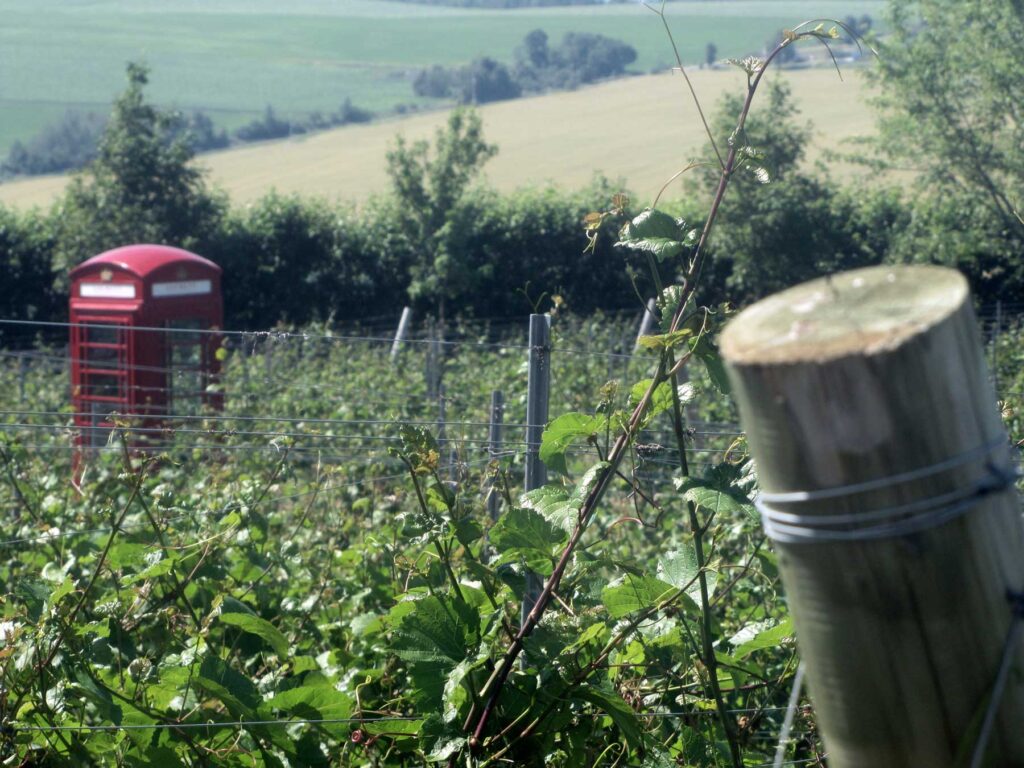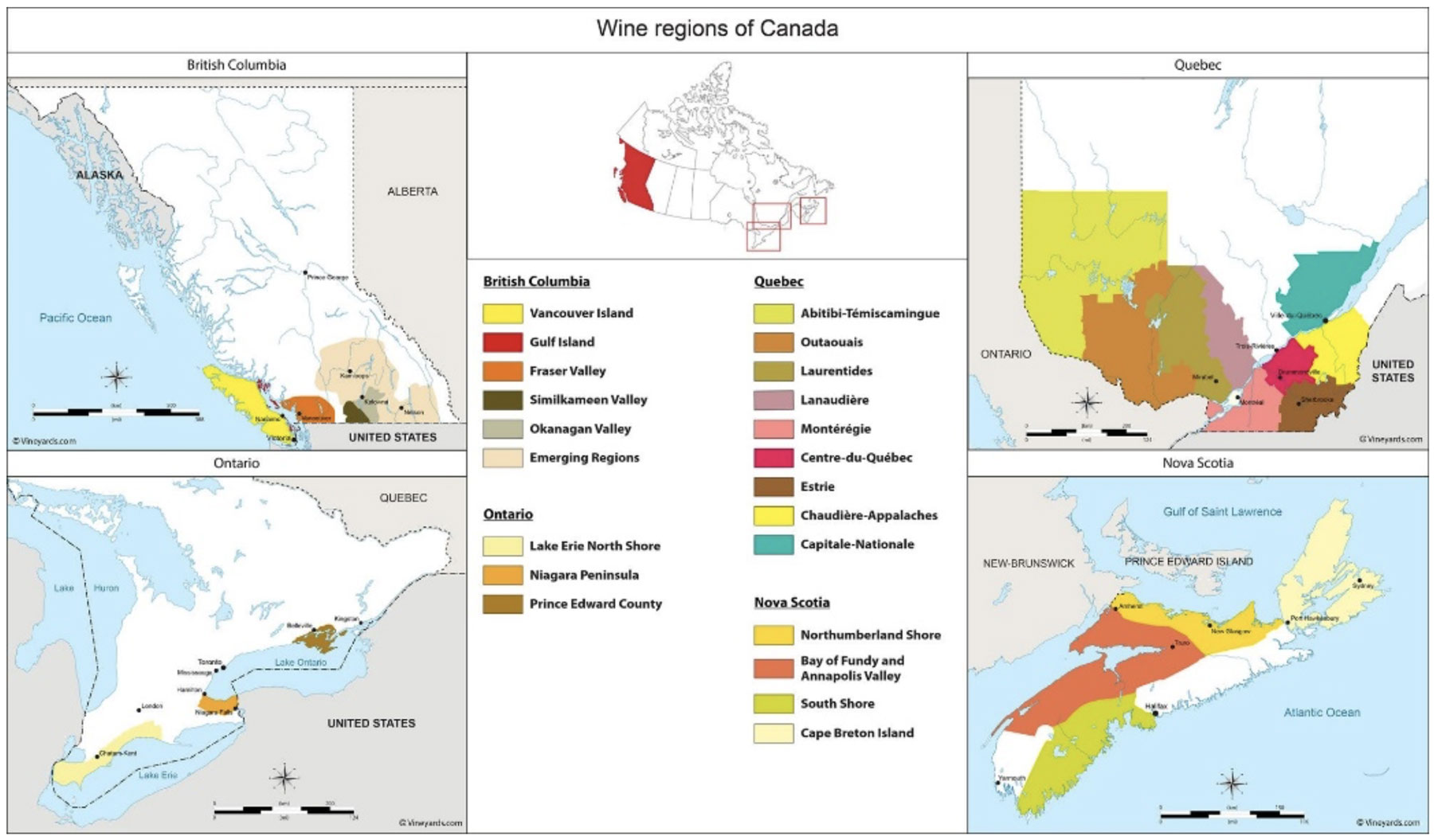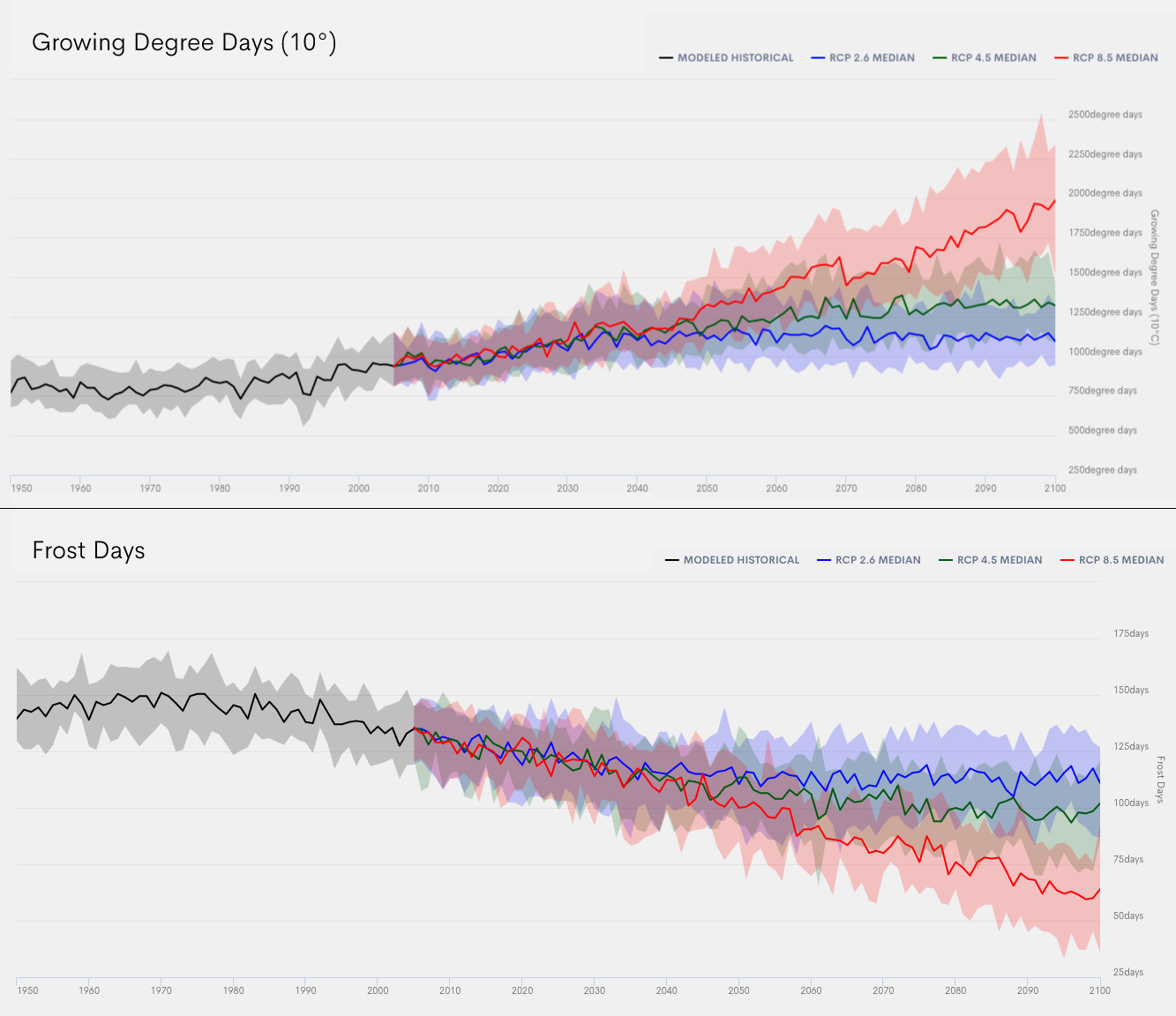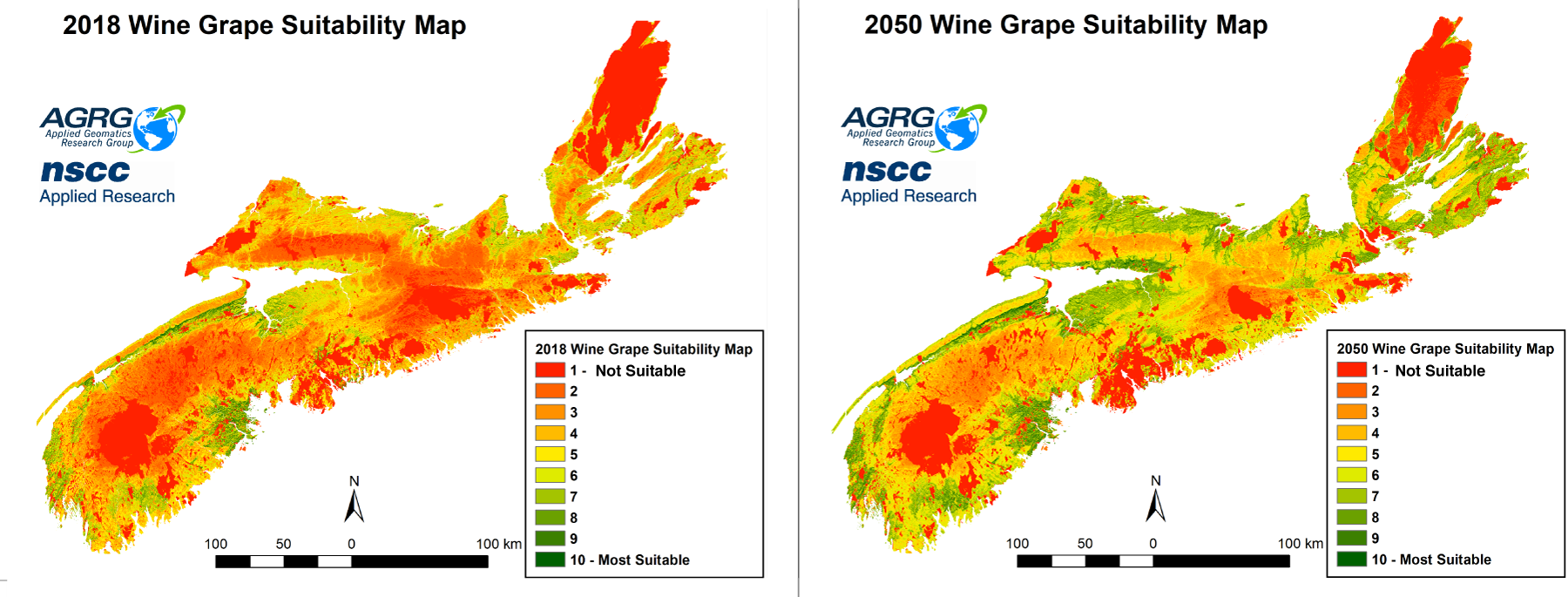Impacts for Canada’s Grape and Wine Industry
As of 2015, Canada’s wine and grape industry contributed $9.04 billion to the Canadian economy, with Nova Scotia contributing $218,411,000 in economic impact7. Canada’s wine and grape production occurs in southern regions, as wine production in northern parts of the world is generally limited to climates found in the 30° and 50° latitudinal range8.
Especially in the cooler regions of Canada, the number of Growing Degree Days and cold winters, which risk damaging grape vines, are limiting factors for growing grapes8,9. Cold-hardy, short season hybrid grape varieties, such as L’Acadie and Baco Noir, are more common in Nova Scotia than Vitis viniferas varieties, which require more heat units and a longer growing season10,11.
Warmer temperatures due to climate change may provide suitable conditions (see Table 1) to allow for the introduction of higher quality Vitis viniferas varieties, such as Pinot Noir and Chardonnay11. However, warmer temperatures also pose new risks, such as increased heat stress and diseases such as powdery mildew, when combined with humid conditions9.
Figure 2: Projected changes in Growing Degree Days (10°C) and Frost-Free Season for Halifax, Nova Scotia.
Evolution of Growing Degree Days (10°C) (top) and frost-free season (bottom) for Halifax, from 1950-2100, simulated by the 24 climate model ensemble in the BCCAQv2 dataset. Bold lines represent the median values and the 10th to 90th percentile range for each RCP is represented by coloured shading.
Climate projections for Nova Scotia indicate a substantial increase in Growing Degree Days (10˚C) and a longer frost-free season under climate change. For Nova Scotia in the 1981-2010 period, the median value for Growing Degree Days (10°C) was 861 degree days, and the 10th and 90th percentile values were 818 and 879 degree days. Under RCP 8.5, these values are projected to increase to a median of 1115 degree days, and 10th and 90th percentile values of 1001 and 1254 degree days by 2021-50. Following the thresholds outlined in Table 1, this projected increase would shift the climatic suitability for grape growing from “unsuitable” to “good” for Growing Degree Days (10°C).
To better inform the grape and wine sector, the Nova Scotia Federation of Agriculture (NSFA) developed the AgriRisk project which aimed to support decision making and resilience building in the province’s grape growing sector. The AgriRisk project developed several tools which pair information on the evolution of critical climate indices with other information relevant for decision making12.





